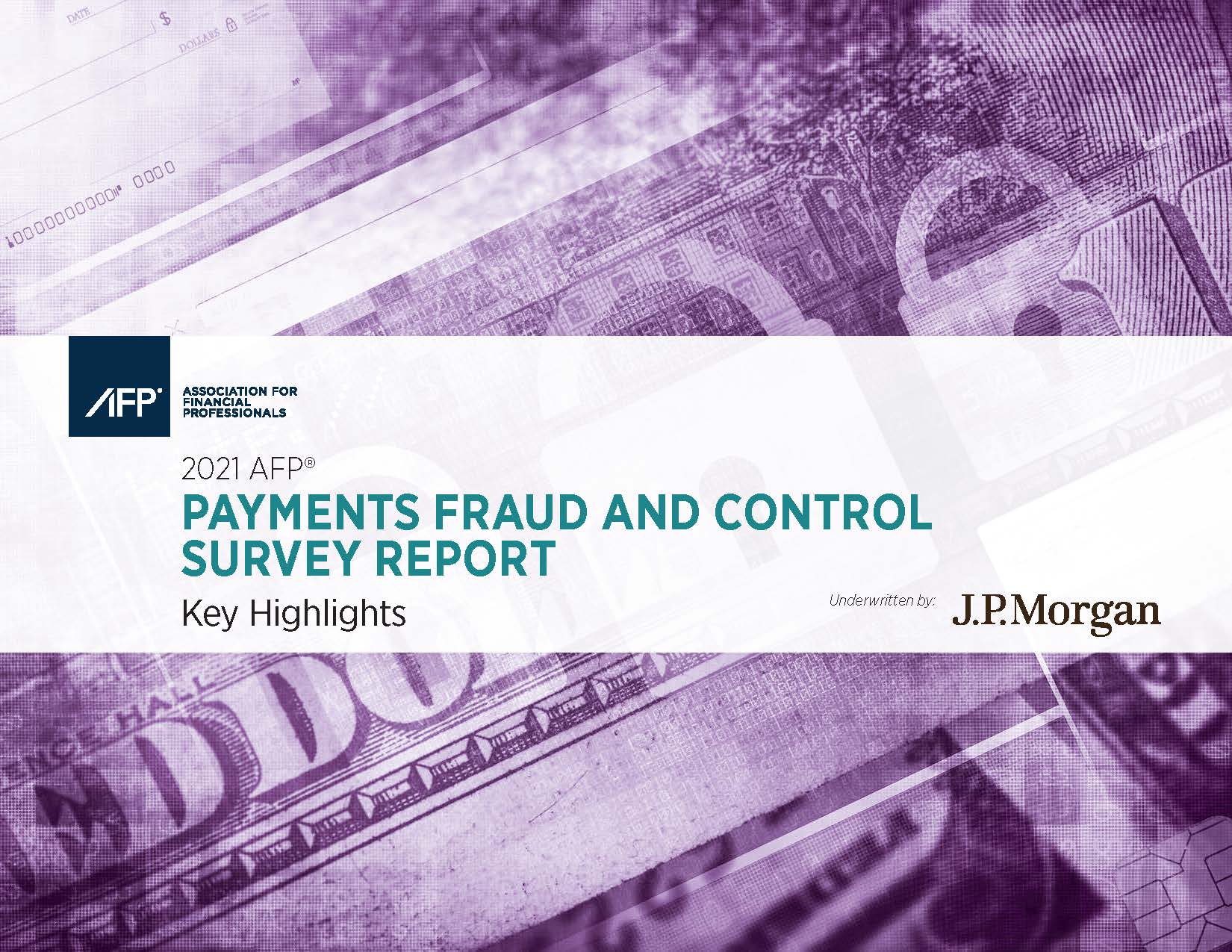Will Check Fraud in 2022 Mirror 2021? Start Preparing Now.
- Industry reports confirm fraud attempts and losses are still a concern
- Fraudsters take advantage of the "need for speed"
- FI's can adapt quickly with layers of protection
As checks continue to hold their position as a viable payment channel, the past five years yielded a rise in check fraud that was difficult to foresee. Meanwhile, fraudsters have evolved tactics to exploit the vulnerabilities of check defenses wherever possible, i.e. funds availability policies.
Recently, the Association of Financial Professionals (AFP), in conjunction with JPMorgan, published new data in their 2021 AFP Payments Fraud and Control Survey, reporting post-pandemic figures indicating that “In 2020, checks and wire transfers continued to be the payment methods most impacted by fraud activity (66 percent and 39 percent, respectively).”
In an article published by PYMNTS.com, Paramita Bhattacharjee, vice president, product line leader, risk insights at Early Warning, notes that while fraud is prevalent in all payment channels, including digital, check fraud accounts for 60% of attempted bank account theft (American Bankers Association’s 2019 Deposit Account Fraud Survey).

Clearly, FIs need to protect themselves and their customers at every decision touchpoint, verifying identities and assessing risk in real time by ascertaining that the individual being onboarded is real and not some sort of fabricated persona or synthetic ID. As banks receive payments via check or ACH, Bhattacharjee said they need to identify high-risk transactions, authenticate account ownership and assess risk — all in real time.
While banks do their best to educate their customer base while also updating their processes and policies, fraudsters will go to great lengths to scam victims:
But what else can banks do in 2022 to curb fraud?
Looking Forward to 2022 and Beyond
There are several highly anticipated surveys and research reports on payments fraud scheduled for publication in early 2022. These new data points will help identify the protection gaps and help the industry home in on addressing fraud challenges.
In the meantime, Bhattacharjee notes that financial institutions can be more vigilant on their customers accounts:

Banks can protect themselves — and their consumer and commercial clients — by being proactive with simple efforts like monitoring accounts for heightened activity, especially if they have been dormant for some time and then show bursts of transactions.
That same vigilance should be in place at the individual business level apart from the bank, she told PYMNTS. A deep dive into the buying patterns of the end consumer, and a focus on chargebacks and even what type of merchandise they are buying, can all illuminate whether attempted fraud is in the mix.
Thinking "Micro" Instead of "Macro"
Vigilance should only be part of the solution, particularly when it comes to check fraud. Many banks are deploying transactional-analysis based fraud solutions that are able to detect irregularities or anomalies within transaction accounts, providing a macro level view.
However, banks need to target individual transactions as well, taking a micro-perspective on each field of the check. A layered approach using artificial intelligence, deep learning, and image forensics specifically interrogates all the fields of a check image and blends this with transactional data. The result: Improved protection on counterfeits, forgeries, and alterations to checks in both on-us and deposit processing.

By complementing transactional-analysis technologies with image forensic based artificial intelligence, banks are able to take a "macro" and "micro" look at check transactions, effectively protecting themselves and their customers from on-us and deposit fraud in 2022 and beyond.